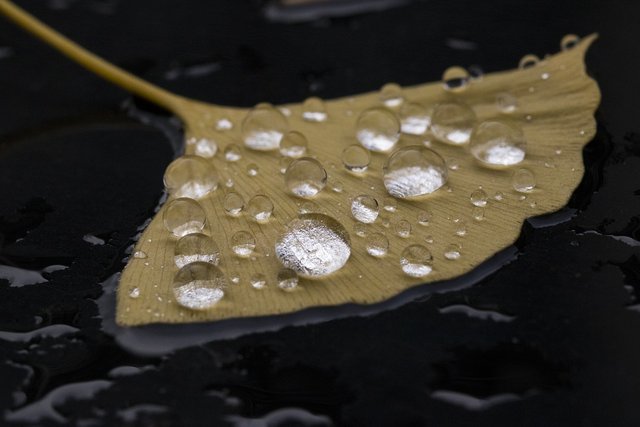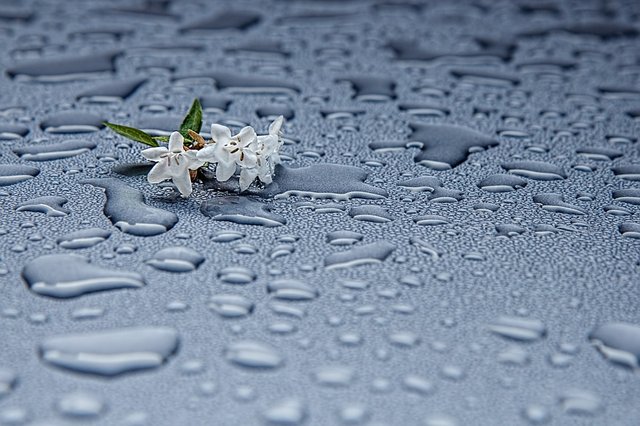Rainwater free from the sky and into your garden? I look at how we can retain this precious resource.
As I'm sitting here at my computer, I can hear rain on the roof and spattering against the windows. Ah, it's a wonderful sound, isn't it? If I listen very carefully, I reckon I can even hear the garden sighing in relief! Climate change has struck my relatively wet area of the Adelaide Hills, with this winter being the driest on record. So far, everything is surviving, but I dread the summer. All the more reason, then, to hoard every last drop of the water that falls free from the sky.
Tap vs Sky?
When we use reticulated water, it has fallen elsewhere as runoff, found its way into a dam, been treated, and then pumped long distances to reach us. All this requires energy and a LOT of water. For water to collect in dams, there needs to be enough of it to actually run off the surface of surrounding catchments and reach a storage dam a light shower on dry soil will simply soak in. In hot weather, water that might otherwise make the journey simply evaporates back into the sky, or evaporates from the surface of the storage dam.
Conversely, water that falls directly on to our roof, into a tank or on to our garden bypasses the middleman. Even very light showers falling on to a roof with almost 100% runoff can be stored in our own tanks. Evaporation is practically nil. And 100% of rain that falls onto our soil can potentially be stored there (at least up to field capacity, the maximum amount soil can hold before shedding excess as runoff) for grateful plants to use. Thus an individual household collecting its own rainwater potentially needs fewer and lighter rainfalls overall to produce the same amount as comes through a reticulated supply.
Retaining water on our own property, rather than letting it rush down stormwater drains to be wasted, or to pollute streams and watercourses, or to be treated and discharged into the sea, makes good environmental sense as well.
Potable water requires different collection and storage than water that is to be used for, say, toilets and laundry or the garden; check with your local council for guidelines on storage requirements, leafguards, and diverters.
Tanks
Rainwater tanks are the obvious solution for storing water on our own properties. Tanks now come in numerous shapes and sizes to suit every space, from tall, narrow ones to flat ones that fit neatly against a wall. The old corrugated metal tanks are cheap and still give decades of service if given a stand or dry base and maintained regularly. Plastic tanks are good but can be expensive. Choose a metal tank if you live in a high bushfire-risk area.
I procrastinated for years before buying a water tank (for a bushfire sprinkler system) because I thought that the only way to get one into our back yard was to hire a crane. Wrong. I discovered that one could be built onsite for just $200 extra; the contractor carried in the sheets and built a tall skinny tank that perfectly fitted the space we had set aside.
Rainwater tanks are now mandatory with new houses in many states, while other state and local governments offer money-saving rebates on rainwater tanks. Check with your local council you could be pleasantly surprised!
Plumbing
I need to keep our rainwater tank full during the summer for firefighting but, for urban users, clever plumbing will let you harvest tank rainwater when it is there, or mains water when the tank is empty. Using a simple system, a float switches to mains water when the tank is empty, bypassing the tank completely and leaving it ready to catch any rain. When it does rain and a set amount of water enters the tank, your system switches automatically back to tank water! This solution has enormous potential, because the lightest of showers can be harvested, and your tank has storage capacity for the maximum amount of time and is being used to its maximum potential.
On-site retention basins
These are simply unlined or lined ponds on your property. Rainwater from our roof flows into a tank, but the overflow goes to an unlined pond in our front yard. Only the overflow from this pond in turn reaches the road. The pond water seeps into the ground, watering the large gum trees in our front yard. All runoff from the paving around our house is also routed into this retention pond. My pond is rather basic, but they can become beautiful landscape features in their own right, especially when combined with artificial streambeds, bog plants or waterplants depending on how much runoff you have.
Improving penetration
Rainwater that falls on to our gardens either soaks into the soil, runs off the soil, evaporates from the surface of the soil, or evaporates through plant leaves as "evapotranspiration" after being absorbed by their roots.
You can minimize soil surface runoff and maximize penetration by ensuring soil is porous and friable, rather than hard improve clay soils with gypsum, add lots of water-holding organic matter (like a invisible sponge distributed through your soil), improve hydrophobic sandy soils with compost, wetting agents or by the addition of clay or loam soil ("marling").
You can also improve soil penetration by slowing the speed of the water as it flows across the soil this is especially important on sloping land. There is little to hinder water as it passes across bare soil but mulch, groundcovers and even grass slow the flow, giving it more time to soak in rather than whizzing past and into stormwater drains. Alternatively, you can contour your property so that water is routed into depressions or around the garden so that it spends more time flowing around, rather than out.
Mulch, as we all know, reduces evaporation, but you can also minimize evapotranspiration water lost from plant leaves by creating a sheltered microclimate protected from strong wind. A windbreak also reduces evaporation from soil surfaces a two-way win!
There is little doubt that, in the coming years, water will become increasingly expensive and restrictions on watering gardens increasingly stringent. Water that falls from the sky directly onto your roof is still free - for now at least! - and harvesting it will become even more financially attractive with each passing year. Why not start now?


You got a 1.60% upvote from @minnowvotes courtesy of @hnub!
Downvoting a post can decrease pending rewards and make it less visible. Common reasons:
Submit
Defended (10.20%)
Summoned by @hnub
Sneaky Ninja supports @youarehope and @tarc with a percentage of all bids.
Everything You Need To Know About Sneaky Ninja
woosh
Downvoting a post can decrease pending rewards and make it less visible. Common reasons:
Submit
Congratulations! This post has been upvoted from the communal account, @minnowsupport, by hnub from the Minnow Support Project. It's a witness project run by aggroed, ausbitbank, teamsteem, someguy123, neoxian, followbtcnews, and netuoso. The goal is to help Steemit grow by supporting Minnows. Please find us at the Peace, Abundance, and Liberty Network (PALnet) Discord Channel. It's a completely public and open space to all members of the Steemit community who voluntarily choose to be there.
If you would like to delegate to the Minnow Support Project you can do so by clicking on the following links: 50SP, 100SP, 250SP, 500SP, 1000SP, 5000SP.
Be sure to leave at least 50SP undelegated on your account.
Downvoting a post can decrease pending rewards and make it less visible. Common reasons:
Submit